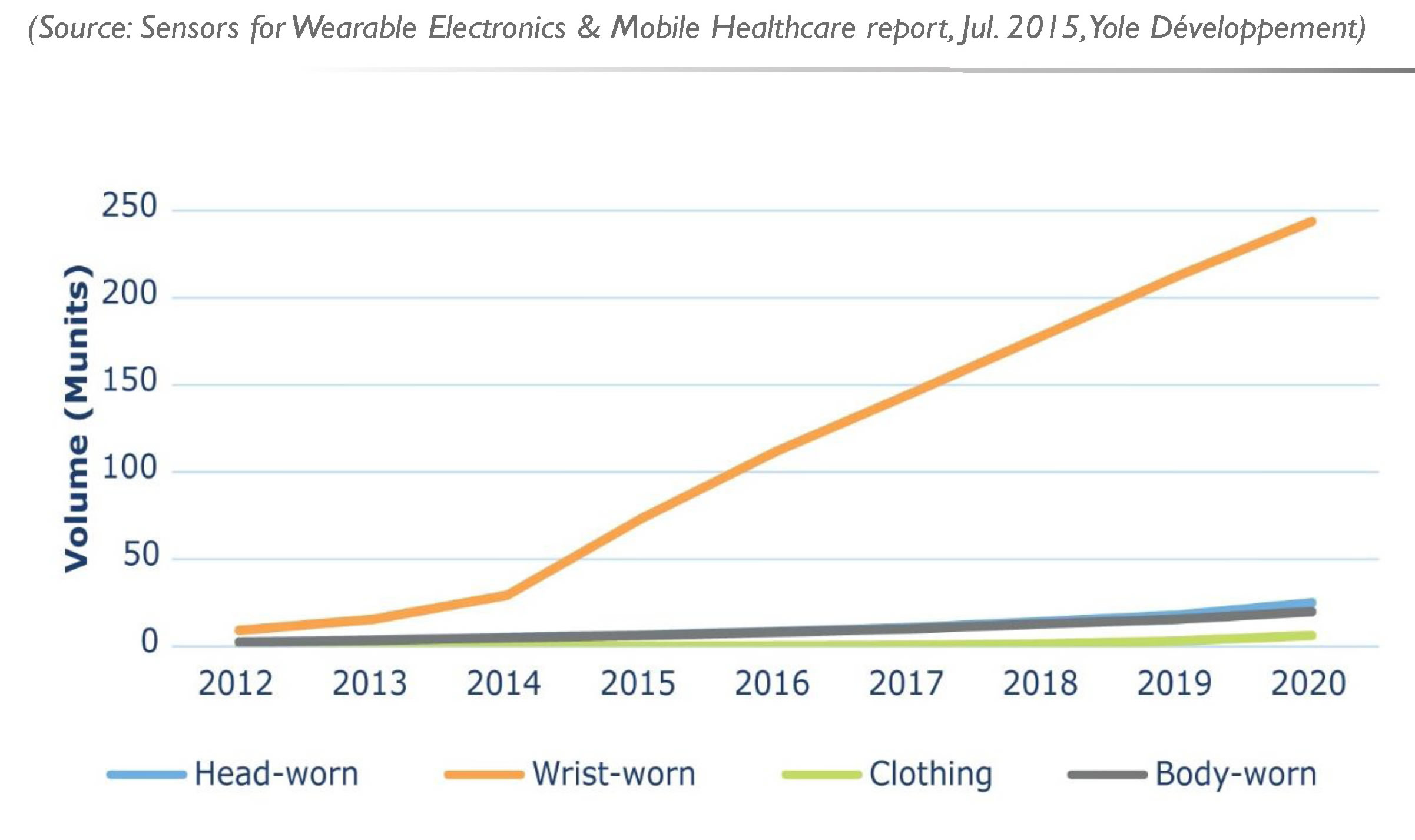Three markets will drive wearables, says Yole
“Three device types are expected to successfully reach the market: smartwatches, smart glasses/HUD and smart clothing,” announces Yole Développement. In its Sensors for Wearable Electronics & Mobile Healthcare report released in July, Yole’s analysts explain that wearable is, without a doubt, a promising industry. But who will take benefit of this attracting market, growing from $22bn in 2015 to more than $90bn by 2020?
Guillaume Girardin, Technology & Market Analyst, Yole, commented: “Smart glasses and HUD are expected to hit the market with high volumes around 2019. Specific to the consumer market, it’s evolved with two device types. The first type are wrist-worn devices that target the healthcare and consumer markets."
It started many years ago, with wrist-worn devices from players like Polar, Suunto and Garmin, operating in a niche market: sports. Another wave of smart bands appeared in 2008, fuelled by new players like Fitbit and Jawbone; this new generation mimics the smartphone approach in that they use MEMS technologies to reduce size, increase performance and decrease power consumption. These smart devices were only able to track and digitalise the body’s real time activity via an accelerometer, which delivered little added value to the customer.

Wearable devices breakdown - between 2012 and 2020
Moreover, some technical and reliability issues led to a chaotic experience for the first batch of customers. Recently, a new tech wave occurred three years ago with players like Samsung and Pebble pushing the smartwatch market, but they failed to reach a mass market due to a one-sided technological approach.
”Apple, the latest entrant in the wearable landscape with its Apple watch, is expected to sell between 16 and 20m units this year,” said Girardin. “Apple’s production would quadruple the total number of devices that its competitors sold last year: 4.7m units in 2014.” Why could the Apple watch achieve success? In its wearable electronics report, Yole’s experts identified and analysed the main factors: mature technology, ecosystem and marketing.
Regarding the industrial market, Yole’s believes that smart glasses/HUD and smart clothing will be well-suited for industrial and military applications. Virtual reality HUD and smart clothing will enhance workers’ and soldiers’ capabilities, increasing productivity and security. Such a market is evaluated at around $4bn by 2020, according to Yole.
Wearables is certainly a promising industry – but who will profit? The wearable electronics’ market value is likely to grow from $22bn in 2015 to more than $90bn by 2020, with a CAGR of 28%. All these evolutions will probably lead to a mass market adoption, here Yole expects more than 134m smartwatches by 2020, along with 1.3m smart glasses/HUD by 2018. In this report, Yole analyses the current wearable industry, what the landscape is like, who the key players, and how the industry will evolve.
The wearable industry greatly interests big companies seeking a new revenue source once the smartphone business levels off. The Sensors for Wearable Electronics & Mobile Healthcare report highlights the expected sensors as of today and the upcoming technologies which can sustain such developments.





